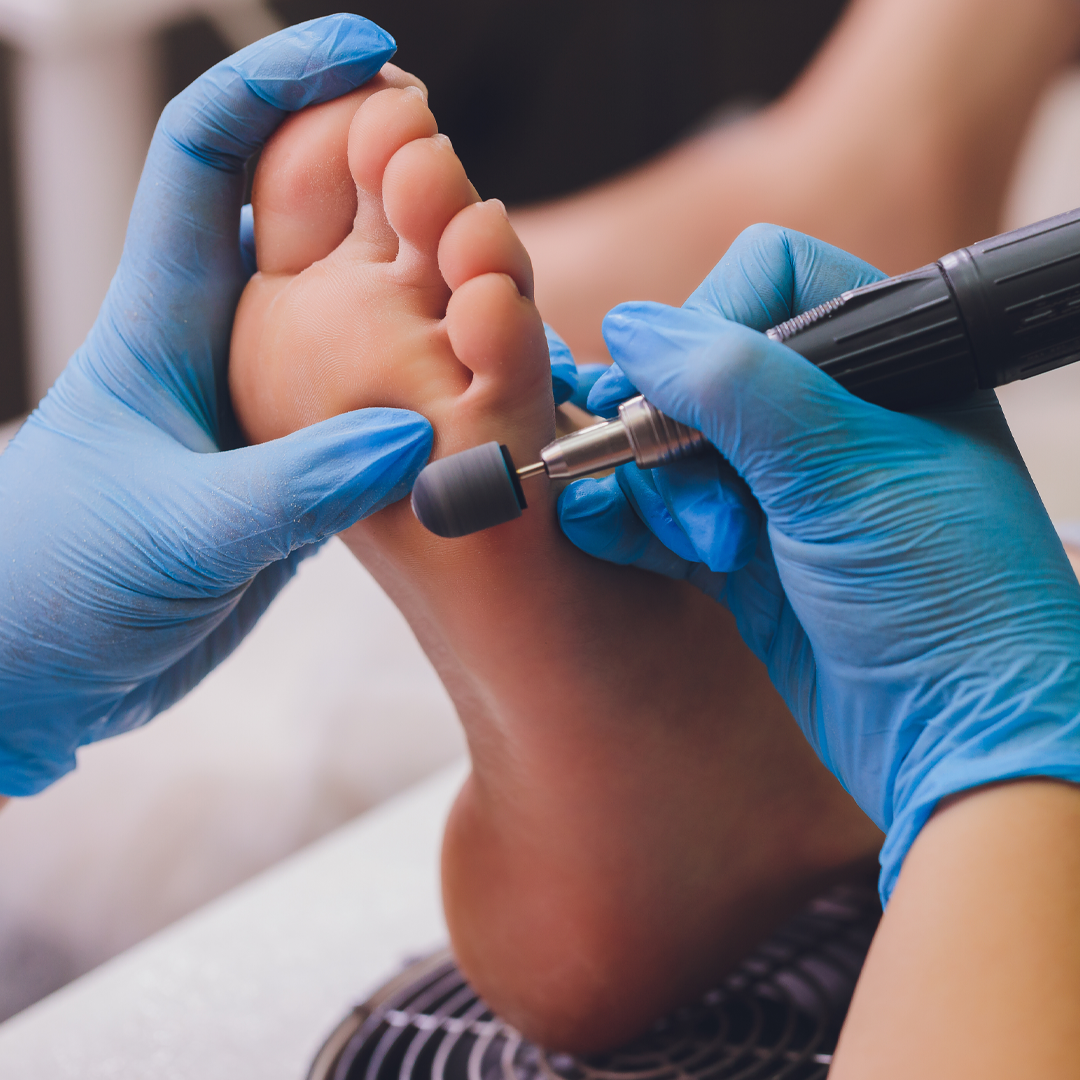Safer Pedicures for Clients with Diabetes

Treating diabetics with pedicures requires special consideration and caution due to the unique health challenges associated with diabetes. People with diabetes often have reduced blood flow to their extremities and may have nerve damage (neuropathy) in their feet, which can impair sensation. These conditions make them more susceptible to infections and less likely to feel irritation, pain, or injury, which can lead from minor issues to severe complications.

RESURFACING PEDICURE GEL 300 ML - £17.99Efficient and drip-free callus remover, formulated with a high concentration of Urea and Lactic Acid. It contains no alkali, is unscented, requires no rinsing, and is safe for even sensitive skin. BUY NOW |
Issues with Certain Types of Callus Removing Gels
The typical callus removing gels often contain ingredients like salicylic acid, potassium hydroxide, or sodium hydroxide. These ingredients can be problematic for diabetics for several reasons:
-
Chemical Burns and Skin Irritation: Alkaline substances and strong acids can cause burns or severe irritation. Diabetics, who may not feel the extent of the irritation due to neuropathy, can suffer from burns without realizing it, leading to open wounds and infections.
-
Overly Aggressive Exfoliation: Products designed to aggressively remove calluses can strip away too much skin, leading to open sores. Diabetics need to avoid creating any open wounds on their feet due to their high risk of infections.
-
Allergic Reactions: Diabetics may also have sensitive skin, making them more susceptible to allergic reactions from the various chemicals used in callus removers.
Dangers of Pedicures for Diabetics
-
Infection Risk: Small cuts, scrapes, or nicks that might occur during a pedicure can lead to infections. Because of their compromised immune systems and reduced blood flow, diabetics heal slower, and infections can become serious if not properly managed.
-
Neuropathy: Diabetics with neuropathy may not feel pain from a cut or burn, which means injuries might go unnoticed and untreated, increasing the risk of infection and ulcerations.
-
Poor Blood Circulation: Reduced blood flow can impair the healing process, meaning even minor foot injuries can lead to serious consequences, including ulcers or, in extreme cases, the need for amputation.
Safer Pedicure Practices for Diabetics
-
Consultation with Healthcare Provider: Diabetics should always consult with their healthcare provider before undergoing any type of pedicure, especially if they plan to use chemical callus removers.
-
Use of Gentle Products: It is advisable to use gentle, moisturizing products that do not contain harsh chemicals. Products that hydrate and mildly exfoliate, such as those containing urea or lactic acid in moderate concentrations, are preferable.
-
Professional Care: Diabetics should seek care from experienced professionals who are trained to handle the needs of diabetic clients. These professionals should use sterile instruments and be vigilant about avoiding any techniques that could injure the skin.
-
Regular Inspections: Diabetics should regularly inspect their feet for any cuts, sores, or changes to promptly address any issues.
By following these guidelines, the risks associated with pedicures for diabetics can be significantly reduced. Safe practices help ensure that the pedicure experience is both enjoyable and beneficial without leading to adverse health consequences.